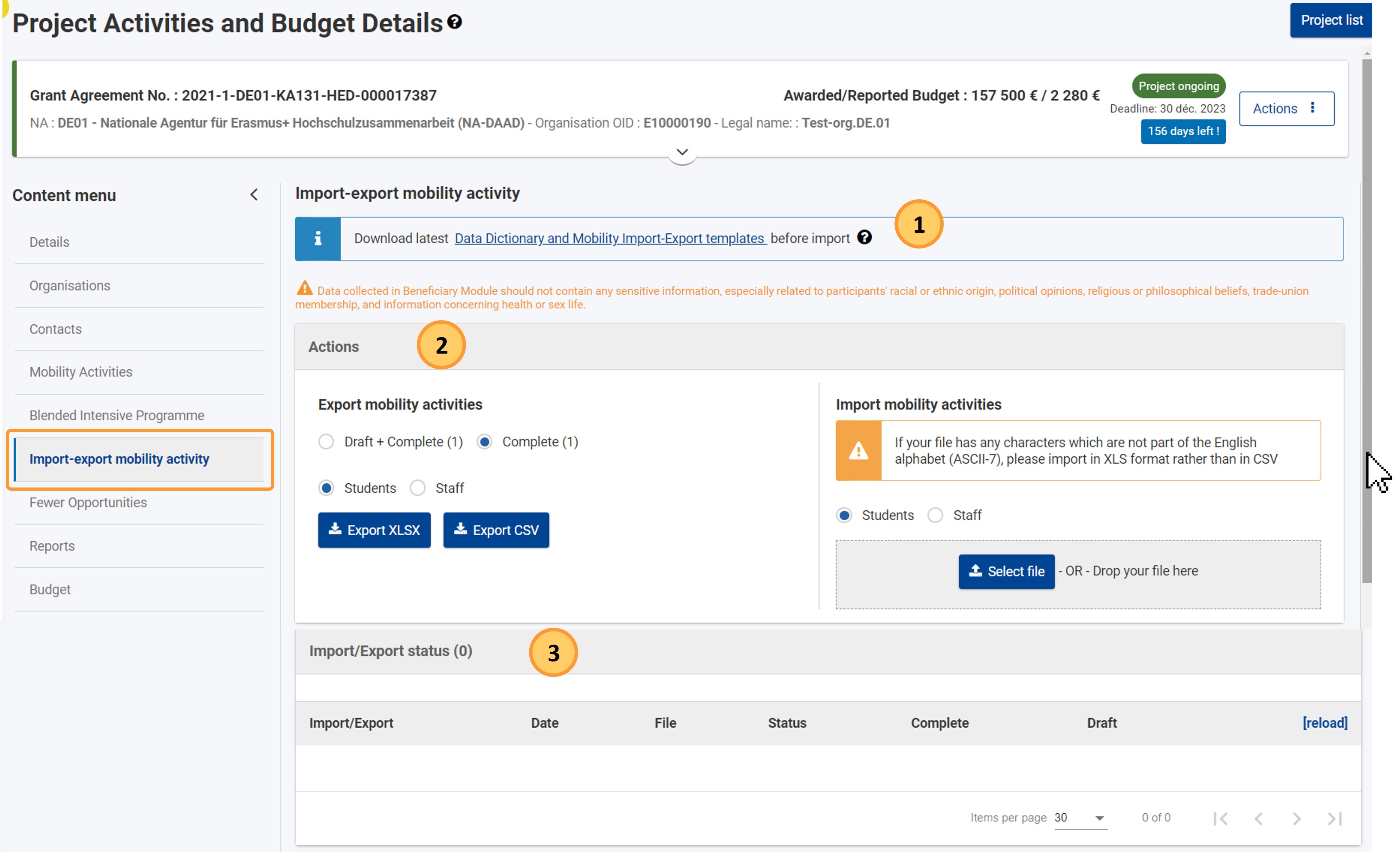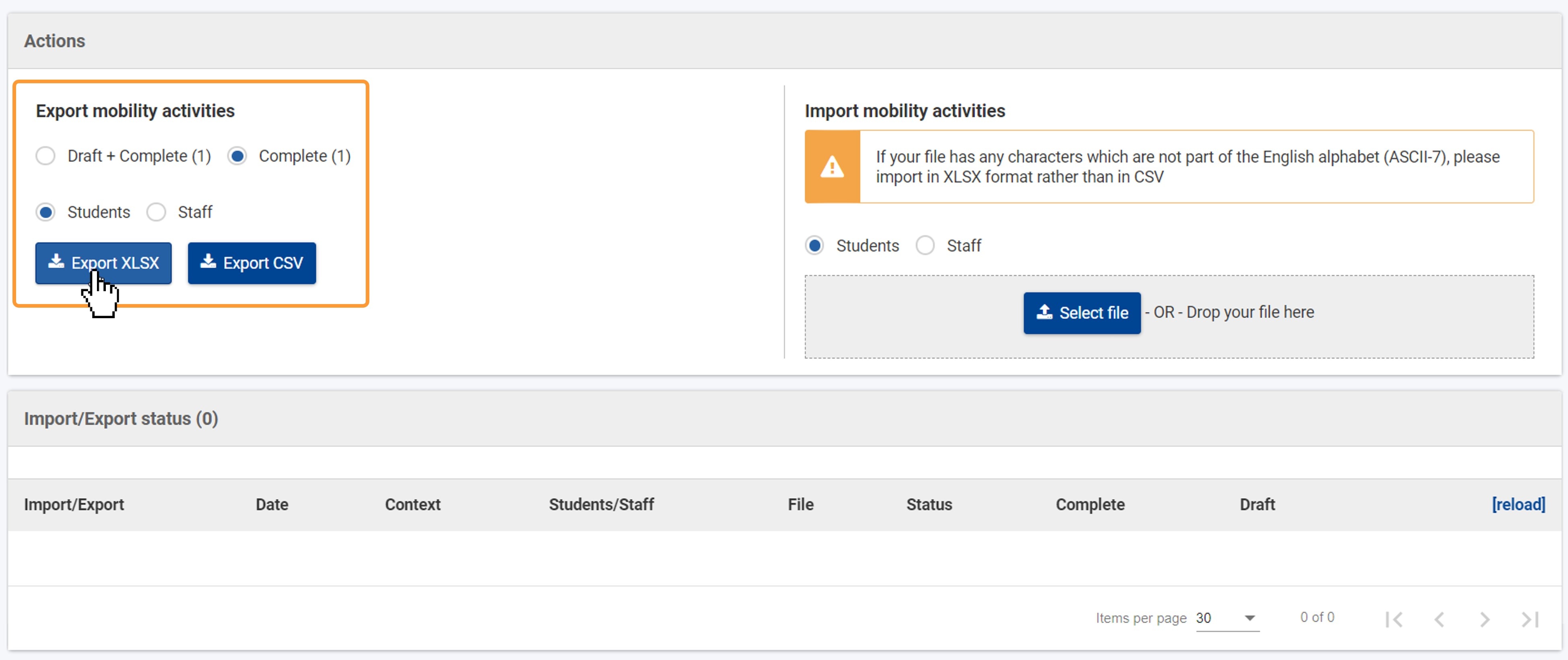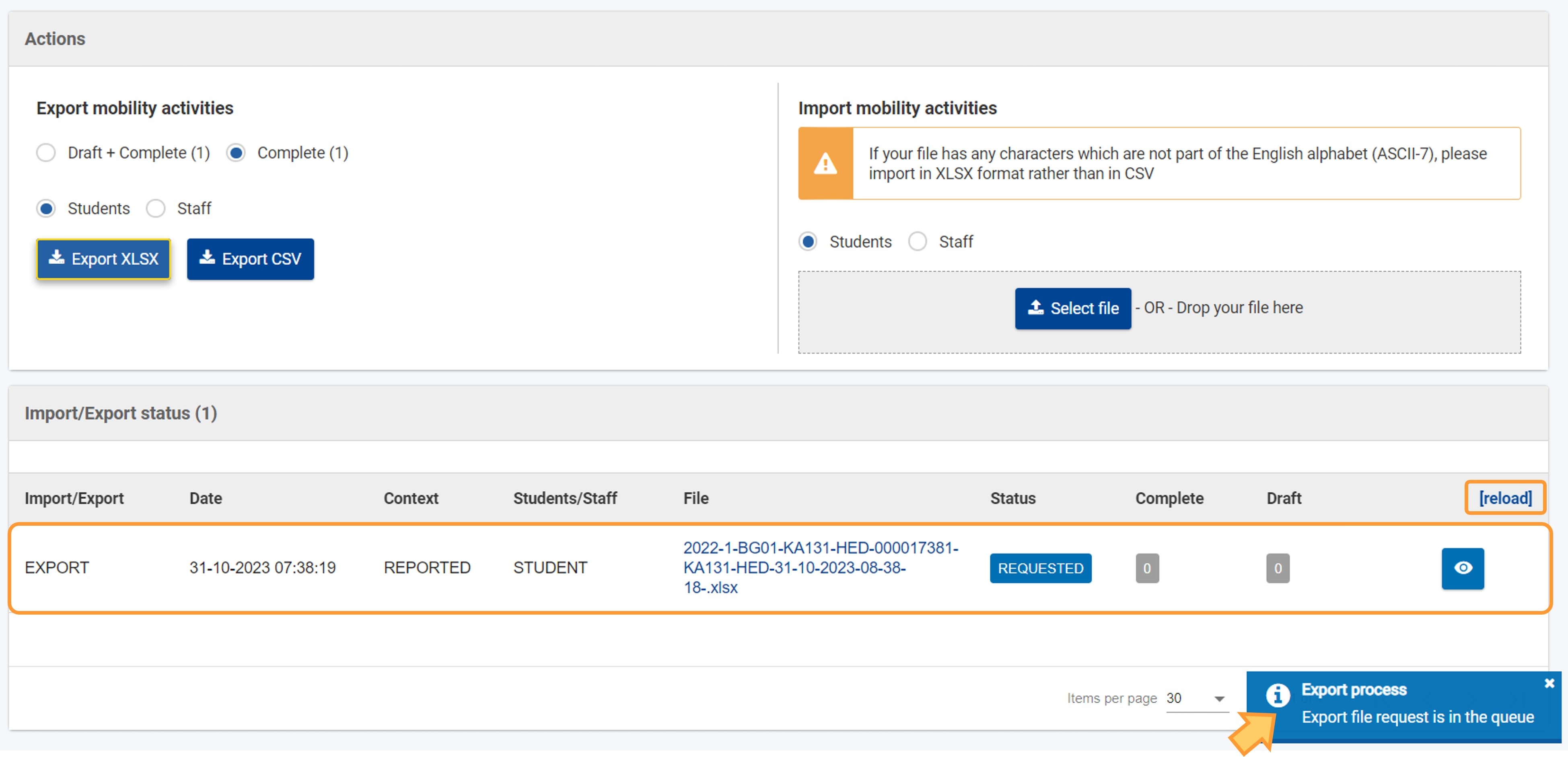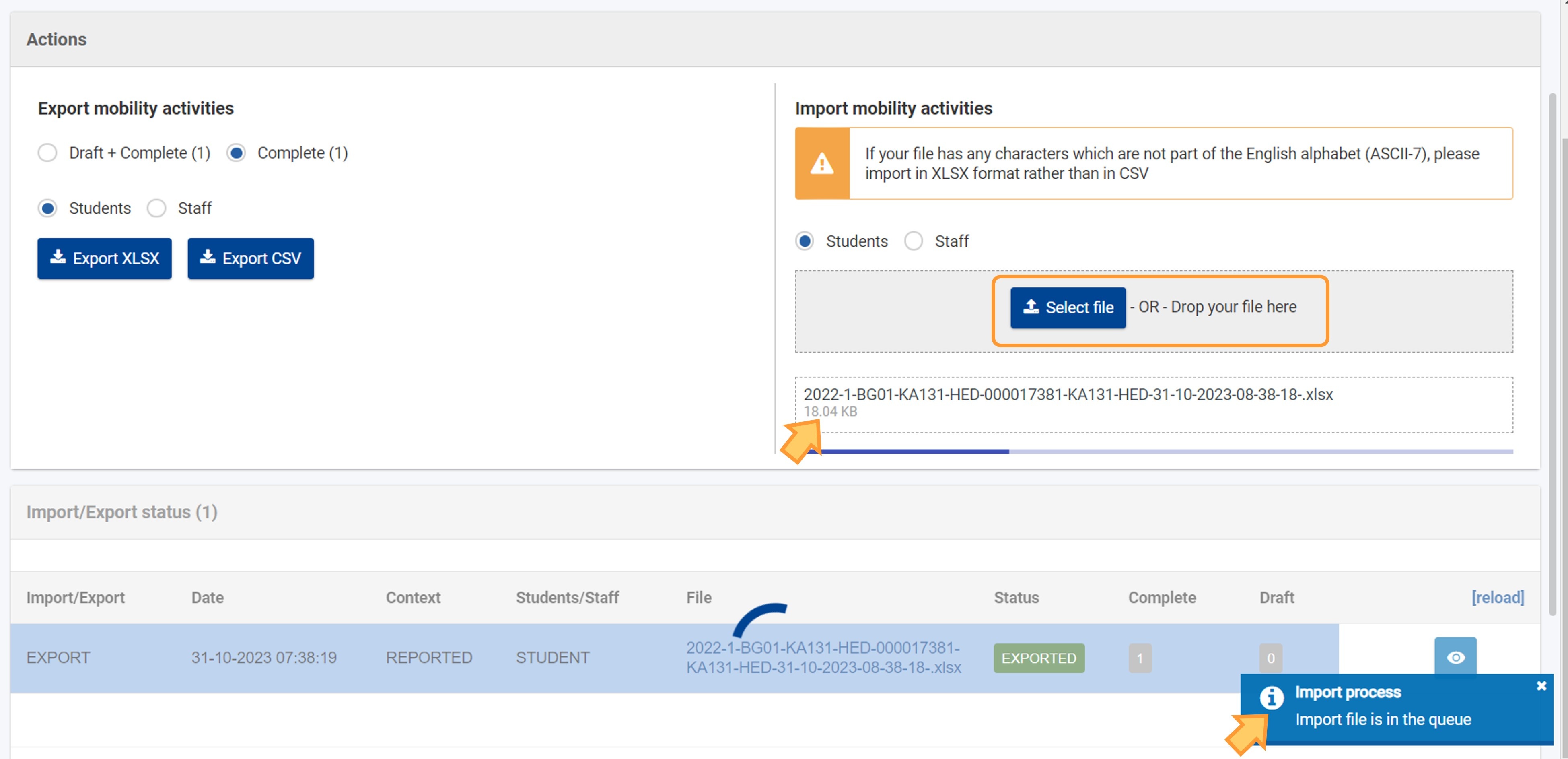Beneficiaries can import mobility activities into their project as long as the Final Beneficiary Report has not yet been submitted. The functionality to export and import mobility activities allows to add multiple mobility activities at once as well as to update multiple existing mobility activities. While importing mobility activities, organisation(s) can also be added to the project at the same time. |
It is possible to export the mobility activity list as XLSX or CSV files and to import as XLSX or CSV. The instructions on this page are based on the processing of an XLSX file. All the latest templates and data dictionary files can be found on Data dictionary and Mobility Import-Export templates.
For an overview of the process see Manage mobility activity export and import. For information regarding the import log, see the page View mobility activity import error logs.
The examples used below are based on a KA131-HED - Mobility of higher education students and staff, call 2022, project.
It is advisable to export the latest file template after each release to ensure that any changes (e.g. added or removed fields) are also reflected in the file you intend to import. |
This page is relevant for:
|
<div class="page-break-ruler"> </div> |
Steps
Click on "Import-export mobility activity"Click on Import-export mobility activity in the Content menu of your project. The Import-export mobility activity screen opens, displaying:
Export the mobility activitiesSelect the type of mobility activities to export (HED only)In the Export mobility activities section of the screen, use the radio buttons to choose whether to export:
Click on "Export XLSX" and download the fileClick on the Export XLSX button.
A notification message displays, informing you on the export process. In the list, the status of the export displayed is, initially, Processing. Click on reload to refresh the list to check the progress.
When the export file is ready, its status will be Exported. Click on the file name and follow the instructions on the screen to download it on your local device. The file extension is *.xlsx and the file name is generally composed of: the project number, followed by the date and time of the export, e.g. 2021-1-EL01-KA131-HED-000015426-KA131-HED-12-11-2021-09-23-23-.xlsx.
Update and save the mobility activity fileOpen the file and update the mobility activity list as described on the page Edit the mobility activity import file. Data dictionaries are provided for a better understanding of the content and the fields displayed in the exported files.
Import the mobility activity fileSelect the type of mobility activities to import (HED only)Use the radio buttons to choose whether you will upload student or staff mobility activities into your project. Your selection must match the mobility activity type in the XLSX file. In our example we have selected Students, which is also the default selection.
"Select file" to uploadClick on Select file, then follow the onscreen instructions to locate the file and upload it. Alternatively, you can drag and drop the file from its location to the designated area on the screen. The import will start shortly after the file is added, and a message is displayed. The mobility activities will be imported as either complete or draft, depending on how much information you provided in the file.
You can monitor the import progress in the Import/Export status list (see next section). Initially, the status of the import will be Requested. When importing a file, the system first checks if the file type is right, then it checks if the field format and content are correct and finally it checks against the rules described in the Erasmus+ Programme Guide. Click on reload to refresh the list to check the progress.
If the import is successful, the status will be Imported and the number of imported Complete and Draft mobility activities is displayed in the list. The imported mobility activities are listed in the Mobility Activities section of your project. To view more details on the import, such as specific information on the imported draft mobility activities, click on the View icon to open the Import Log. If the import status is indicated with Error, the import has failed and the relevant details are provided in the import log.
In this example, the import was successful. Five completed and three draft mobility activities have been imported.
Import/export status listSee the page View mobility activity import error logs for details. |
Expected Outcome
- The file including draft/complete mobility activities has been imported into the project, and is displayed in the Import/Export list.
- The list of imported mobility activities can be viewed in the Mobility activity section of the project.
<div class="page-break-ruler"> </div> |










